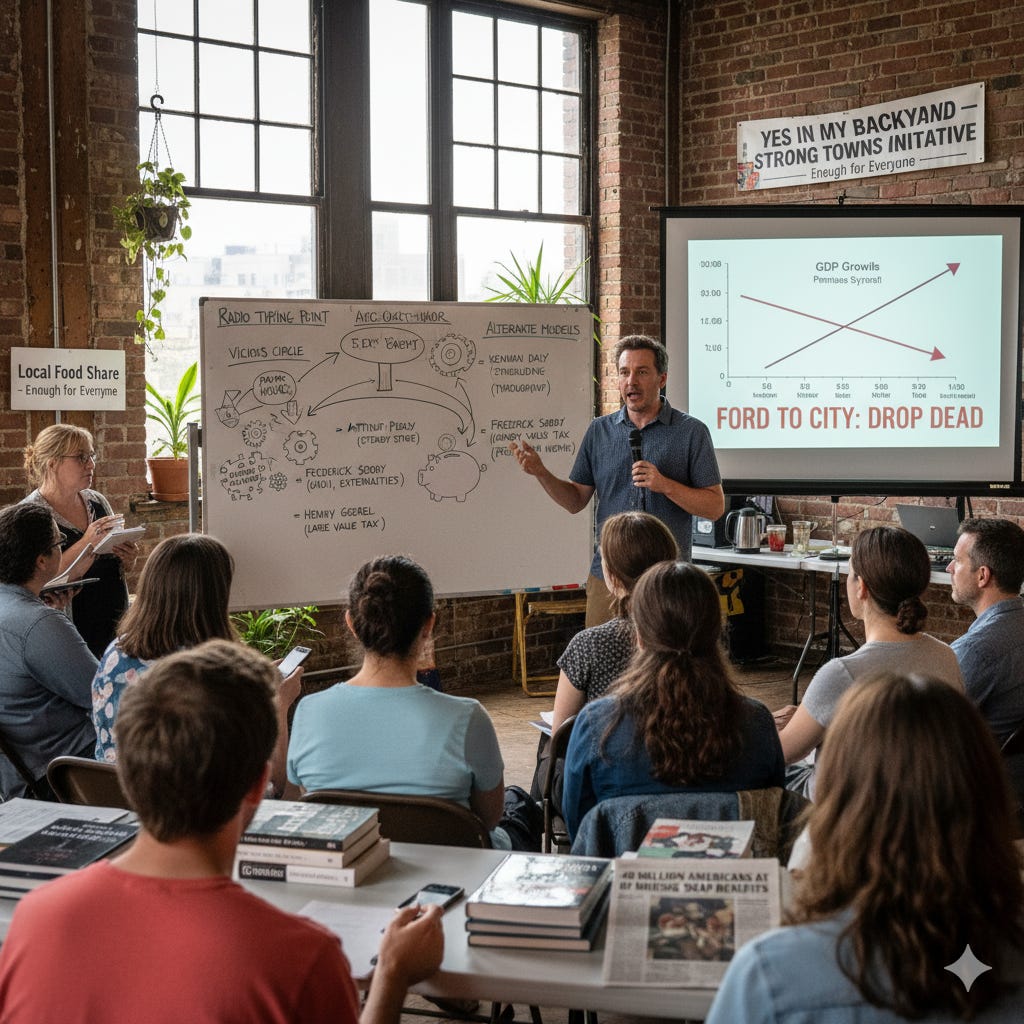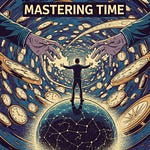Welcome back to Radio Tipping Point. If the last broadcast—The Anti-Charity Hour—was a wake-up call, consider this the deep dive into the architecture of our own confinement. We are told we live in a functioning economy, yet we’re trapped in a Vicious Circle of Dependency where triage is the operational mandate. 🚨
Today, we confront the raw, uncomfortable truth laid bare by recent events: government shutdowns weaponizing essential human needs. When the ACA subsidies are threatened, potentially hiking premiums by 300% 📈, and SNAP benefits are cut, leaving 40 million Americans in food insecurity 🍎🚫, the real question isn’t who is to blame for the shutdown. The real question is:
Why did we construct a society where fundamental rights—the right to eat, the right to health—are treated as political footballs, entirely subject to the whims of the party in power? 👑
We focus on the band-aids (the SNAP payment, the insurance subsidy), but never the root cause 🌱. This system forces us to rely on the largesse of government, or the five-percent disbursement policies of philanthropic foundations. When that funding stops, the system breaks 📉, proving it was never resilient to begin with.
Conditional permission is not freedom. ⛓️
Part I: The GDP Trap and the Infinite Extraction ⛏️
To break free, we must first dismantle the metric of our collective delusion: The Gross Domestic Product (GDP). We expose the fundamental flaw identified by the great American economist Herman Daly, the godfather of Steady State Economics. ⚖️
Daly observed that we are not producers; we are merely manufacturers relying on infinite extraction from a finite planet 🌎. We treat nature—our planetary bank account—as a resource that is free 💸. When we cut down a forest or pull oil from the earth, we count the sale as profit. But, as Daly argues, once you spend from that bank account, the capital is gone. This extraction model is built on an illusion. 🎭
We reveal how the GDP metric is an agent of our own demise:
Destruction as Growth: We incorporate the staggering $7 trillion cost of global fossil fuel subsidies and cleanup 🗑️, alongside nearly $3 trillion in defense spending 💣, directly into our calculation of growth. We are literally celebrating our problems. 🥳
The Hidden Economy: Simultaneously, the invaluable labor of the non-market economy—community care, parenting, household maintenance—valued globally at approximately $11 trillion, is ignored because no money changes hands. 🏡
We need a new ledger. We need Daly’s Index of Sustainable Economic Welfare (ISEW), a model that subtracts destruction and credits real societal value, providing the first true incentive to thrive rather than merely consume and destroy. ✅
Part II: The Lost Prophets—Blueprints for a New Economy 📜
The blueprints for resilience are not new; they were simply buried ⚰️. We resurrect the economic historians—the Lost Prophets—who recognized the fatal flaws in the linear growth model decades, even centuries, ago:
Kenneth Boulding and Throughput: Boulding challenged Keynesian consumerism, insisting that an economy should be measured by throughput—the speed at which resources rush from nature to landfill. ➡️ His solution: slow it down. Design for durability, not obsolescence, because resources are finite. 🐢
Arthur Pigou and Negative Externalities: Over 100 years ago, Pigou tackled poverty and inequality by arguing for accountability. If your business model generates costs—pollution, health crises, social decay (negative externalities)—you must pay for it. 💰 He laid the foundation for taxing destructive behavior and concepts like Universal Basic Income.
Frederick Soddy and Entropy: Soddy offered a revolutionary view of money: it exists to counteract the natural law of entropy (decay). ⏳ Therefore, the function of money is to circulate, not to sit and accrue speculative value. 🔄
Silvio Gesell and Free Money: The German-Argentinian economic heretic who proposed the concept of Free Money—a demurrage tax on unused currency to create an inbuilt incentive to spend it into the community. We tell the story of the Wörgl Experiment in 1930s Austria, a town that flourished until the National Bank moved to eliminate the competition. 🏛️
Part III: Weaving Damn Resilience 🧶
The alternative to dependency is not more complex federal bureaucracy; it is radical, decentralized resilience. We outline the deployed models that prove a better path is possible:
The Strong Towns Movement: Architect Charles Maroon calls our current development pattern a Growth Ponzi Scheme. 🎲 Strong Towns rejects reckless expansion and debt, advocating for Incremental Development (small bets) and prioritizing resilience over efficiency. It is about building financially solvent places designed for people, not just seamless flow for corporations. 🏘️
Community Wealth Building (The Transition Mandate): This is where theory hits the street. It emphasizes focusing on local ownership, maximizing in-community resources, and adhering to the powerful mantra: We have enough. 🤝 By valuing every person and every resource within the neighborhood, we create an ecosystem of self-reliance. Sharing what you have in abundance—be it skills, time, or excess food—becomes the best insurance policy imaginable. 🛡️ When the centralized system fails, this local infrastructure endures.
Final Transmission:
We must stop waiting for the golden egg and start weaving the net below. Your survival should not be a negotiation. It is time to reflect on the results we are getting and discard the process that actively works against us. 🛑
Your Homework: Identify one point of abundance in your life today—a resource, a skill, a privilege—and commit to sharing it outside of the established dependent framework. Let’s make our communities damn resilient. 💪
Join the conversation: How are you weaving resilience in your own neighborhood? 💬











